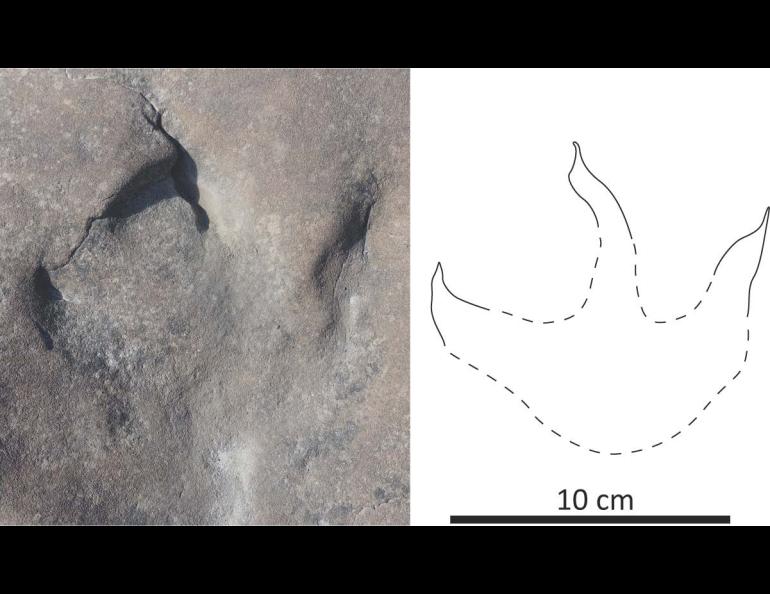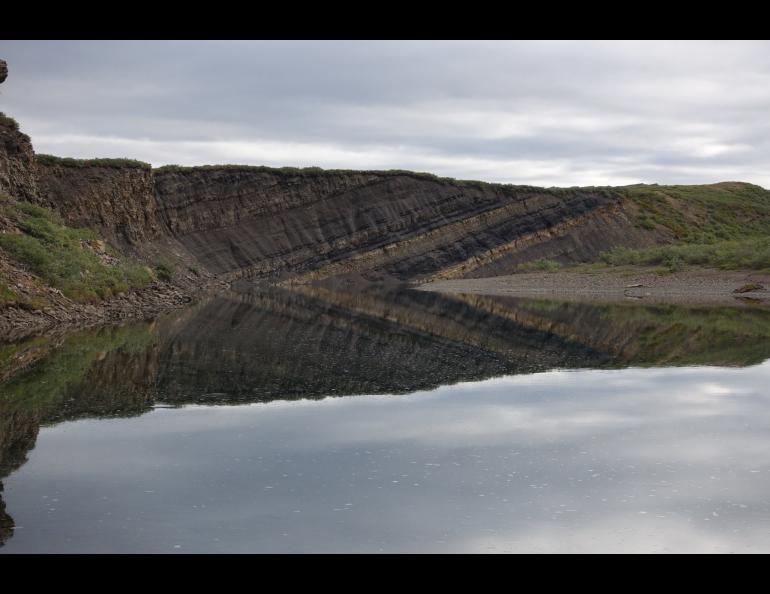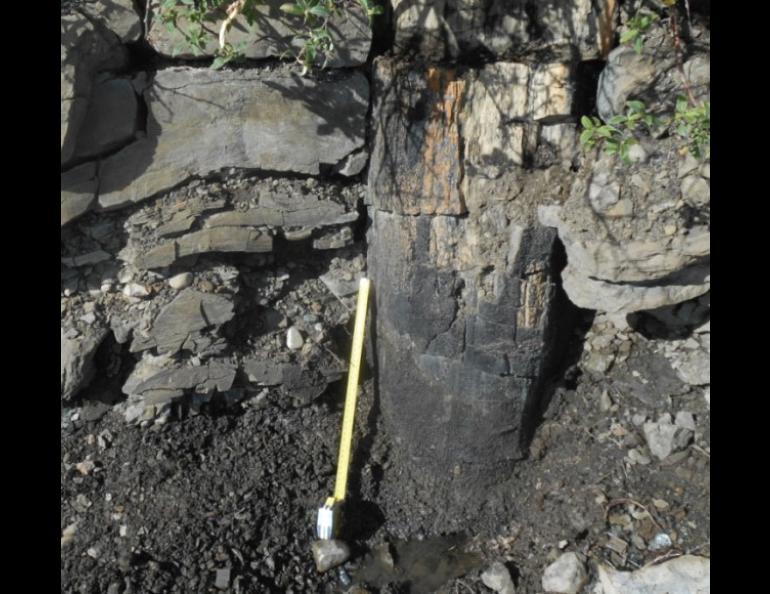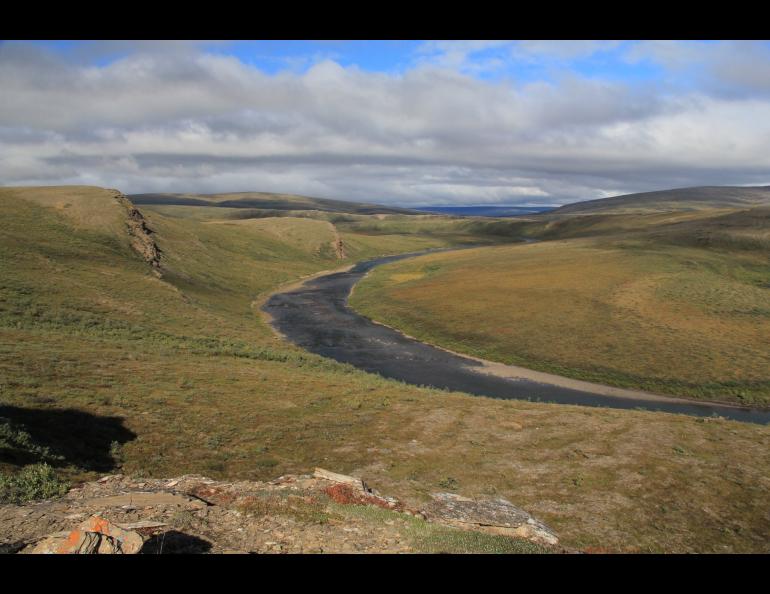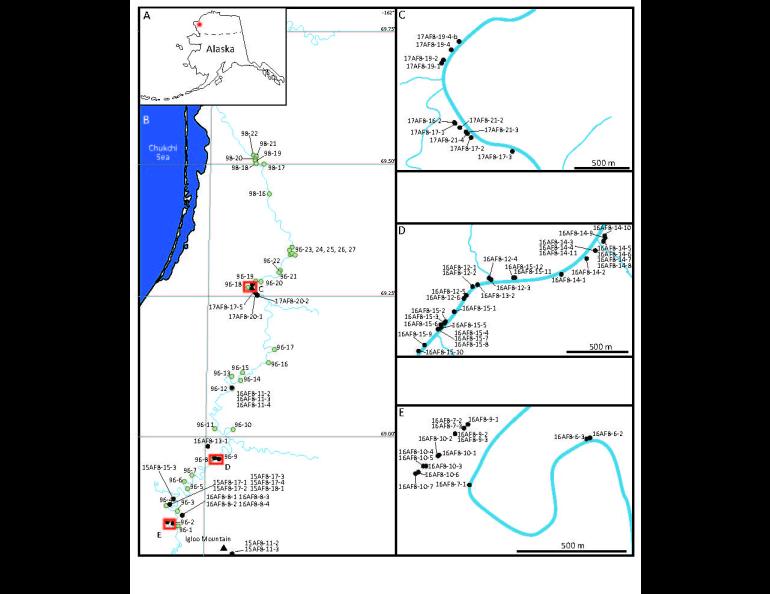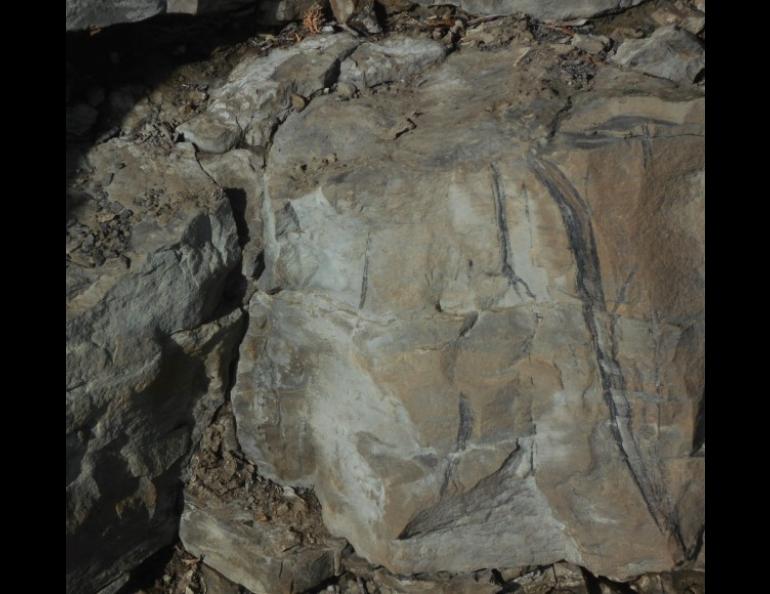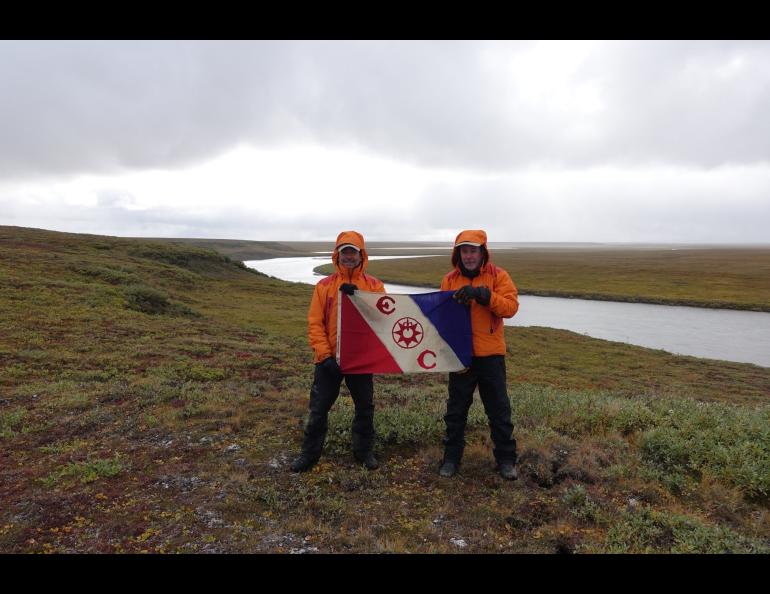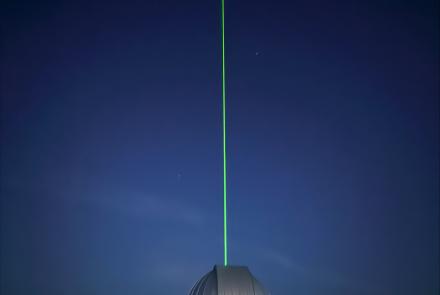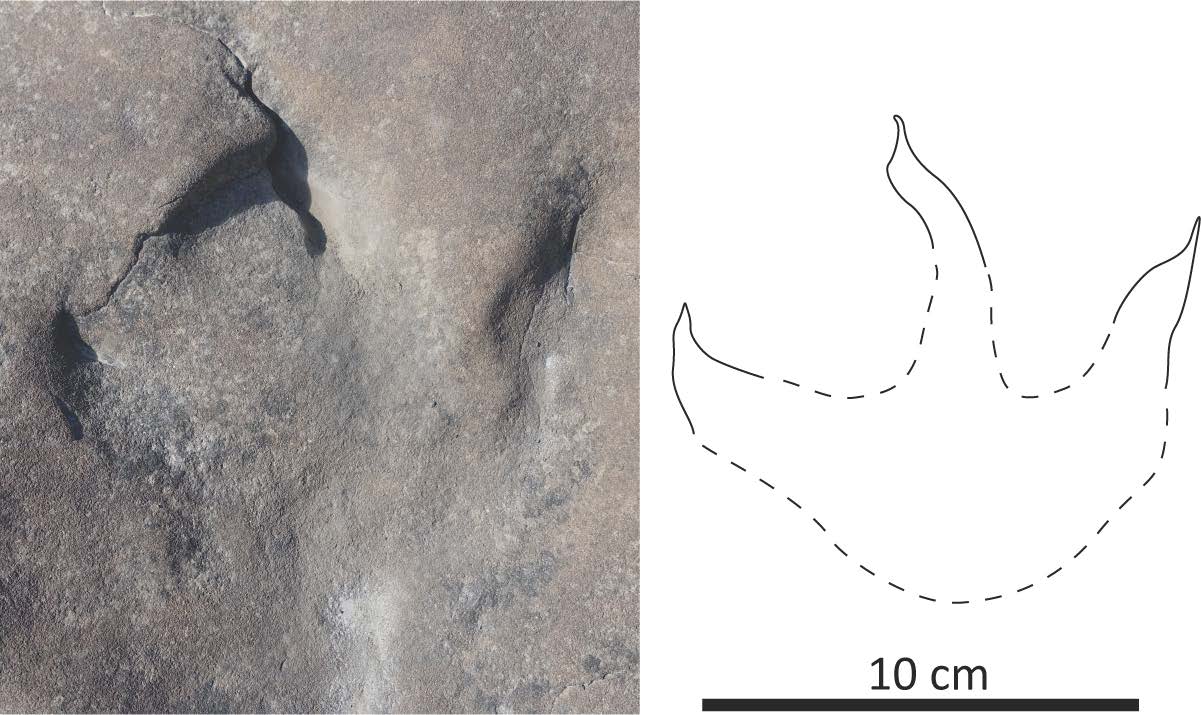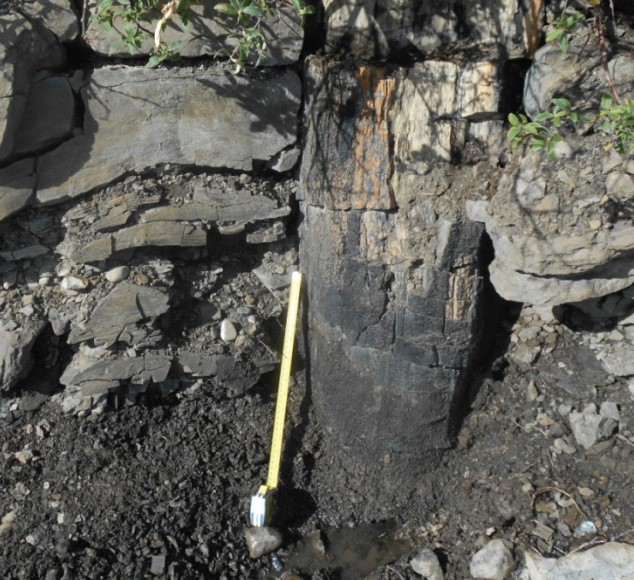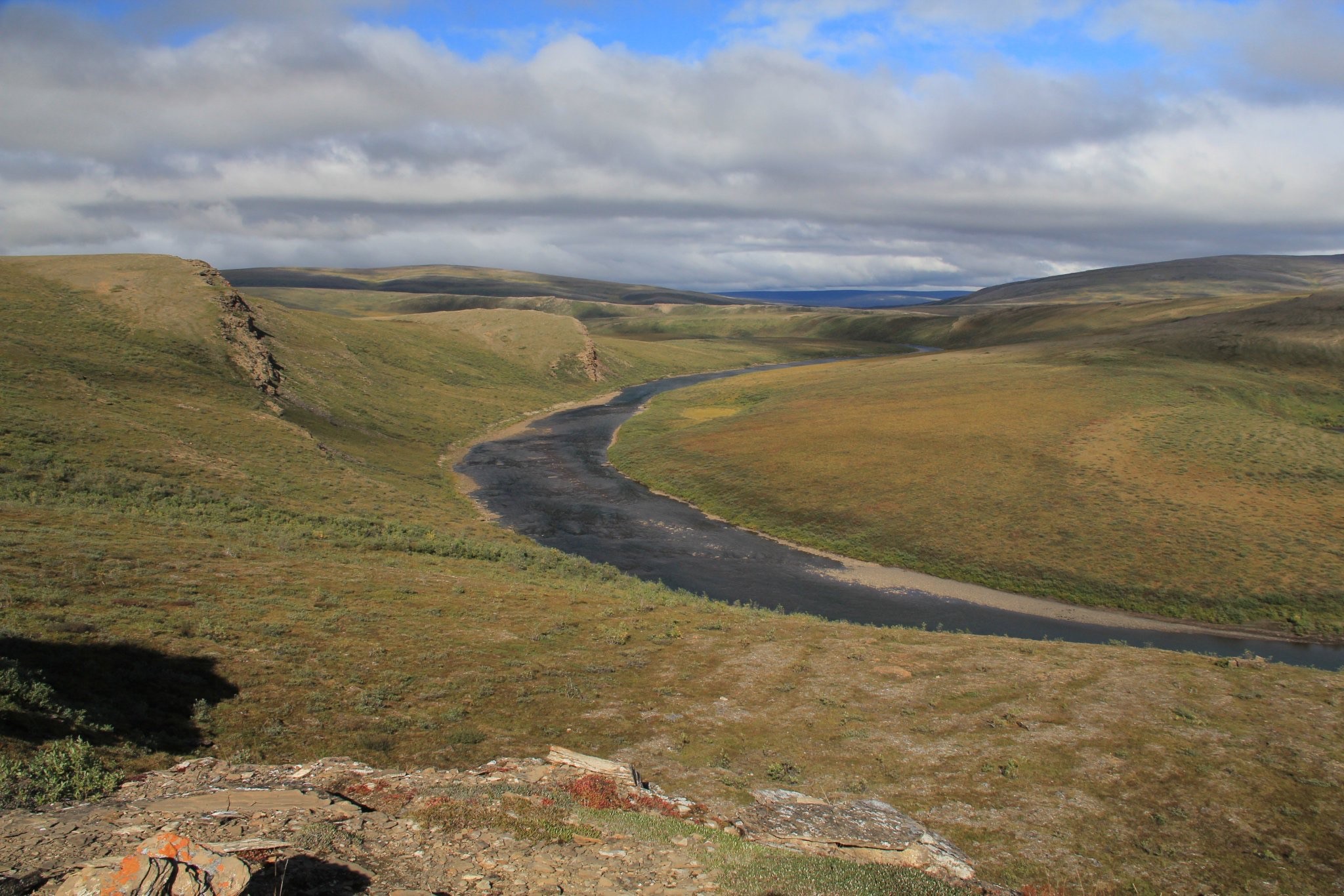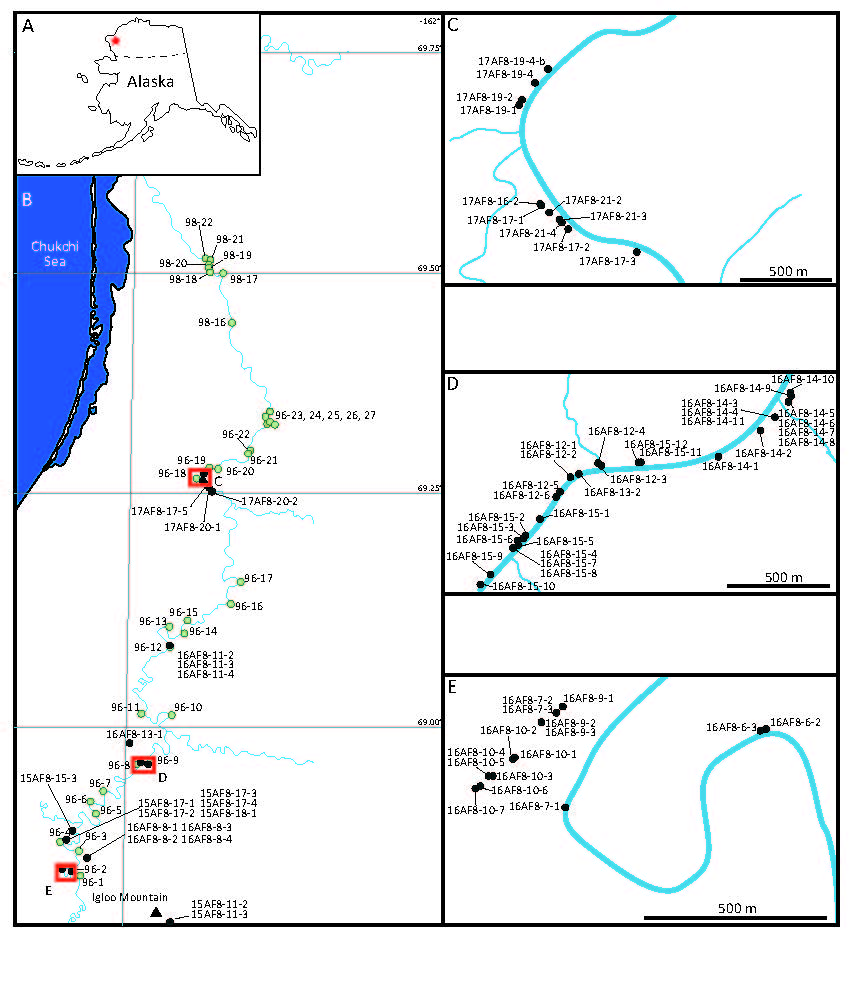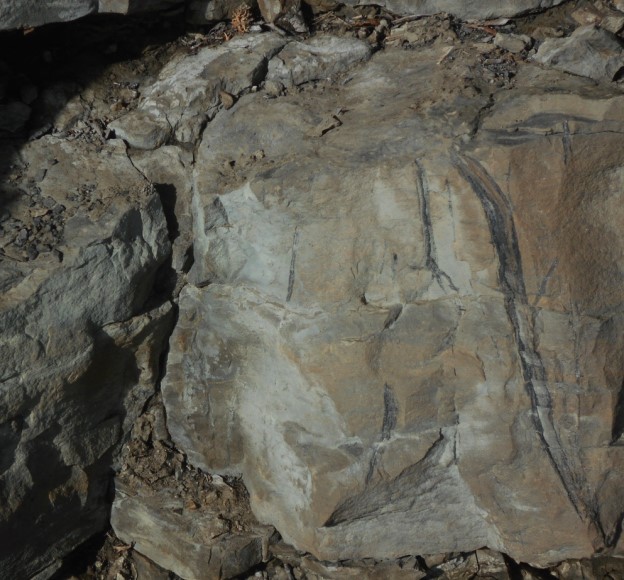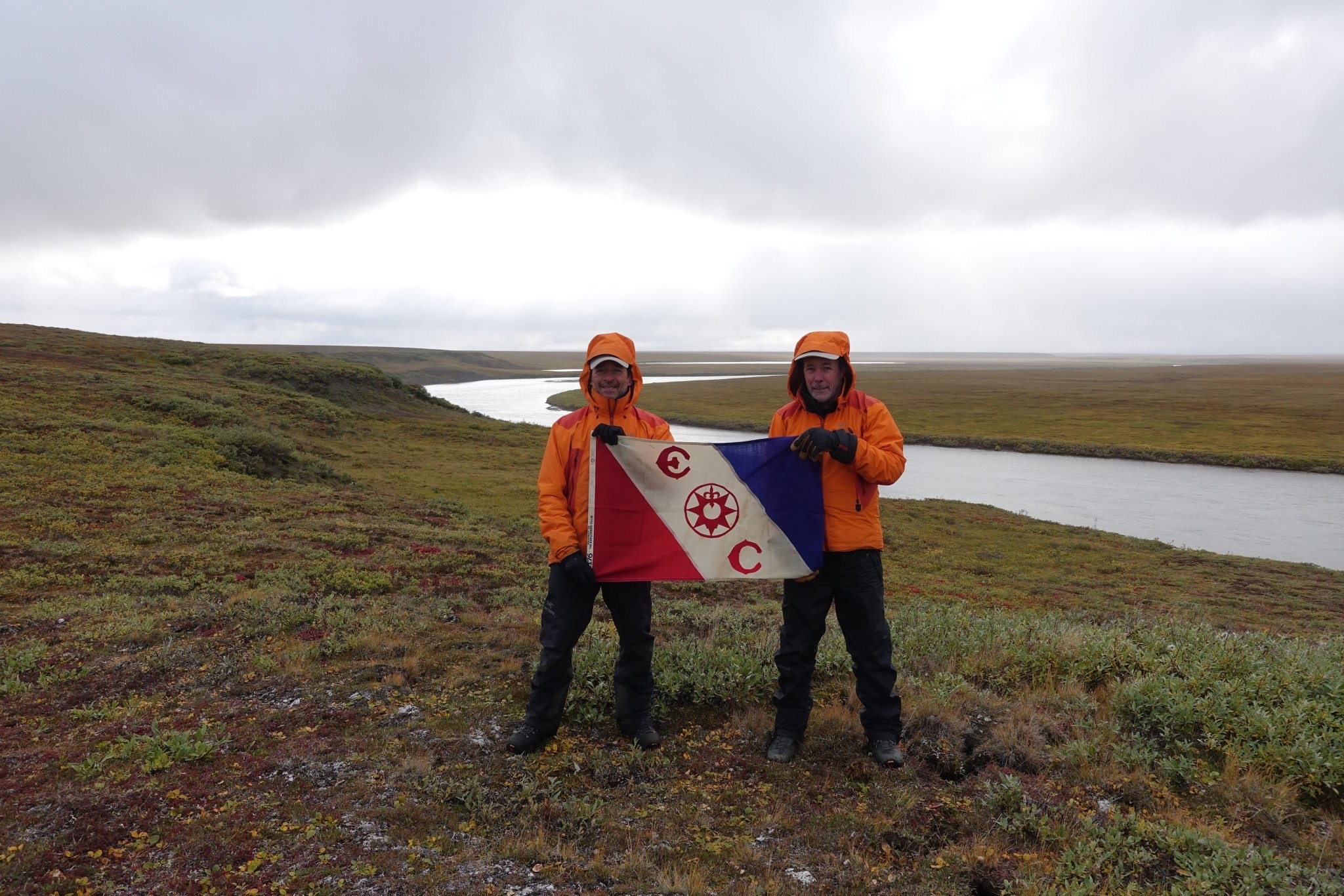A large find of dinosaur tracks and fossilized plants and tree stumps in far northwestern Alaska provides new information about the climate and movement of animals near the time when they began traveling between the Asian and North American continents roughly 100 million years ago.
The findings by an international team of scientists led by paleontologist Anthony Fiorillo were published Jan. 30 in the journal Geosciences. Fiorillo researched in Alaska while at Southern Methodist University. He is now executive director of the New Mexico Museum of Natural History and Science.
University of Alaska Fairbanks geology professor Paul McCarthy, with the UAF Geophysical Institute and UAF College of Natural Science and Mathematics, was a leading contributor to the research. He and UAF graduate student Eric Orphys are among the eight co-authors.
Fiorillo and McCarthy are longtime collaborators.
“We've had projects for the last 20 years in Alaska trying to integrate sedimentology, dinosaur paleontology and the paleoclimate indicators,” McCarthy said. “We’ve done work in three other formations — in Denali, on the North Slope and in Southwest Alaska — and they're about 70 million years old.”
“This new one is in a formation that's about 90 to 100 million years old,” he said.
Fiorillo said the additional age is notable.
"What interested us about looking at rocks of this age is this is roughly the time that people think of as the beginning of the Bering Land Bridge — the connection between Asia and North America,” he said. “We want to know who was using it, how they were using it and what the conditions were like."
Research into the paleoclimate can help scientists understand the warming world of today, the authors write.
“The mid-Cretaceous was the hottest point in the Cretaceous,” said McCarthy, a sedimentologist and fossil soils specialist. “The Nanushuk Formation gives us a snapshot of what a high-latitude ecosystem looks like on a warmer Earth.”
A rich find of evidence
The Nanushuk Formation is an outcropped layer of sedimentary rock 800 to 5,000 feet thick across the central and western North Slope. It dates to roughly 94 million to 113 million years ago in the mid-Cretaceous Period and about when the Bering Land Bridge began.
The fieldwork occurred in 2015-2017 and centered on Coke Basin, a circular geologic feature of the Nanushuk Formation. The basin is in the DeLong Mountains foothills along the Kukpowruk River, about 60 miles south of Point Lay and 20 miles inland from the Chukchi Sea.
In the area, Fiorillo and McCarthy found approximately 75 fossil tracks and other indicators attributed to dinosaurs living in a riverine or delta setting.
“This place was just crazy rich with dinosaur footprints,” Fiorillo said.
One site stands out, Fiorillo said.
“We were at a spot where we eventually realized that for at least 400 yards we were walking on an ancient landscape,” he said. “On that landscape we found large upright trees with little trees in between and leaves on the ground. We had tracks on the ground and fossilized feces.”
They found numerous fossilized tree stumps, some 2 feet in diameter.
“It was just like we were walking through the woods of millions of years ago,” he said.
The Nanushuk Formation encompasses rock of marine and non-marine characteristics and composition, but the authors’ research focuses primarily on the non-marine sediments exposed along the upper Kukpowruk River.
“One of the things we did in our paper was look at the relative frequencies of the different kinds of dinosaurs,” Fiorillo said. “What was interesting to us was that the bipedal plant eaters were clearly the most abundant.”
Two-legged plant eaters accounted for 59% of the total tracks discovered. Four-legged plant eaters accounted for 17%, with birds accounting for 15% and non-avian, mostly carnivorous, bipedal dinosaurs at 9%.
“One of the things that was interesting is the relative frequency of bird tracks,” Fiorillo said.
The authors point out that nearly half of North America’s shorebirds breed in the warm months of today’s Arctic. They suggest that the high number of fossil bird tracks along the Kukpowruk River indicates the warm paleoclimate was a similar driver for Cretaceous Period birds.
A wet and warm place
Carbon isotope analysis of wood samples led to a determination that the region received about 70 inches of precipitation annually. This record of increased precipitation during the mid-Cretaceous provides new data that supports global precipitation patterns associated with the Cretaceous Thermal Maximum, the authors write.
The Cretaceous Thermal Maximum was a long-term trend approximately 90 million years ago in which average global temperatures were significantly higher than those of today.
“The temperature was much warmer than it is today, and what’s possibly more interesting is that it rained a lot,” Fiorillo said. “The samples we analyzed indicate it was roughly equivalent to modern-day Miami. That’s pretty substantial.”
Of note is that the Alaska site investigated by Fiorillo and McCarthy was about 10 to 15 degrees latitude farther north in the mid-Cretaceous than it is today.
McCarthy’s role as a fossil soils expert was to analyze old rocks and sediments to interpret the type of environment that existed at the time.
“We can say here's a river channel, here's a flood deposit, here's a levee, here's the floodplain, here's a swamp,” he said. “And so if we're able to find tracks in that section, then you can sometimes say that a group of dinosaurs seems to have really liked being here as opposed to there.”
Fiorillo said the site indicates there’s much more work to be done.
“This puts a new dot on the map and tells us there's a lot here, and it fits into the bigger picture,” he said. “The big picture is we're trying to get better resolution on what life was like in the high latitudes back at the time the dinosaurs were roaming around.”
